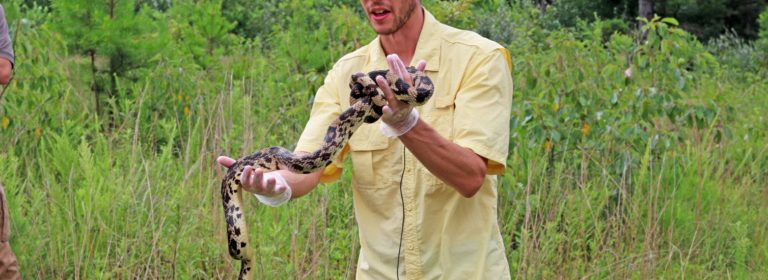Clemson Researchers find Elusive Snake in Northeast Georgia

A pair of Clemson University researchers are leading a multi-state effort to unlock the mysteries of an elusive snake species, the pine snake. Clemson University Doctoral Student Bryan Hudson and Reinhardt University Colleague Zach Felix have spent a number of years looking for and researching the pine snake. After nine years of what he called “two geeky nerds spending a lot of time and money looking for a snake,” Bryan Hudson watched the reptile named Russell slither off into the northeast Georgia landscape barely a week after it was captured. During the release, Hudson said he was unlikely to lay eyes on the five-foot-long snake again for a full year. Russell was released back in the Lake Russell Wildlife Management Area where he was found the previous week; after being surgically implanted with a radio transmitter. Hudson says the snake will be tracked through radio telemetry to learn its behaviors and habitat use. Russell was the first live specimen encountered in the northeast Georgia region since Project Pine Snake began in 2010. Pine snakes are highly evolved for life below ground, with cone-shaped skulls conducive to digging. While they are nonvenomous, they have some of the most pronounced ridges among nonvenomous snakes, making them rough to the touch. Of the four pine snake species found in the eastern United States, northern pine snakes often called bull snakes, maybe the least understood. Hudson explained that the non-coastal pine snake is one of our last big-bodies, characteristic and charismatic vertebrate animals that we don’t know anything about. Pine snakes are yellow, tan or white in color with dark blotches on their back third, a checkered pattern in the middle and a darker, or mottled, pattern at the head. They will also blow loudly when scared. Anyone who sees one of these snakes is asked to snap a photo and contact Hudson at 404-556-1863 or [email protected]. Pictured is Clemson University Doctoral Student Bryan Hudson holding the pine snake, he named Russell, before releasing it back into the Northeast Georgia landscape.
